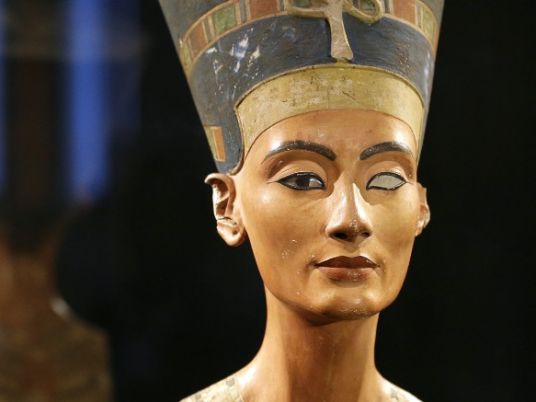
An Egyptian panel of experts has approved using radar to search for a hidden chamber in King Tutankhamun's tomb, which may be the burial place of Queen Nefertiti, an official said Thursday.
Archaeologists have never discovered the mummy of the legendary beauty, but renowned British archaeologist Nicholas Reeves said in a recent study that her tomb could be in a secret chamber adjoining Tutankhamun's tomb in the Valley of Kings at Luxor, southern Egypt.
Reeves, who was in Luxor in September to probe his theory, believes one door of Tutankhamun's tomb could conceal the burial place of Nefertiti.
"The committee of experts has given its approval for using radars," Mushira Mussa, antiquities ministry spokeswoman told AFP.
"But we are still awaiting clearance from security services, and some time in November we may start searching" Tutankhamun's tomb, she said.
According to Reeves, professor of archeology at the University of Arizona, Tutankhamun, who died unexpectedly, was buried hurriedly in an underground chamber probably not intended for him.
His death would have forced priests to reopen Nefertiti's tomb 10 years after her death because the young pharaoh's own mausoleum had not yet been built.
But Antiquities Minister Mamdouh al-Damati believes that such a chamber, if found adjoining Tutankhamun's tomb, may contain Kiya, a wife of the pharaoh Akhenaten, or his daughter Merytaten.
Nefertiti played a major political and religious role in the 14th century BC. She actively supported her husband Akhenaten, the pharaoh who temporarily converted ancient Egypt to monotheism by imposing the single cult of sun god Aton.
Damati and Reeves hope that sophisticated radar equipment will reveal the existence of another funerary chamber in the heart of Tutankhamun's tomb, which the minister says would be the "discovery of the century".
The final resting place of boy king Tutankhamun, who died in 1324 BC after just nine years on the throne, was discovered by another British Egyptologist, Howard Carter, in 1922.



